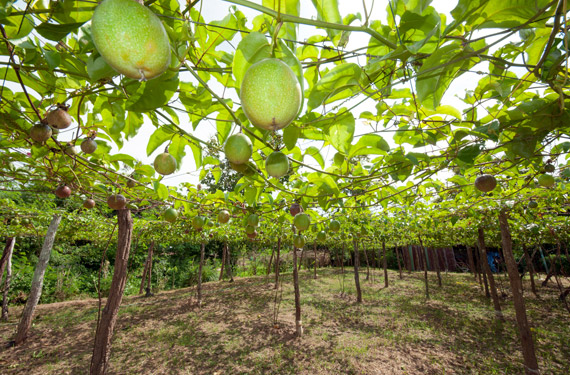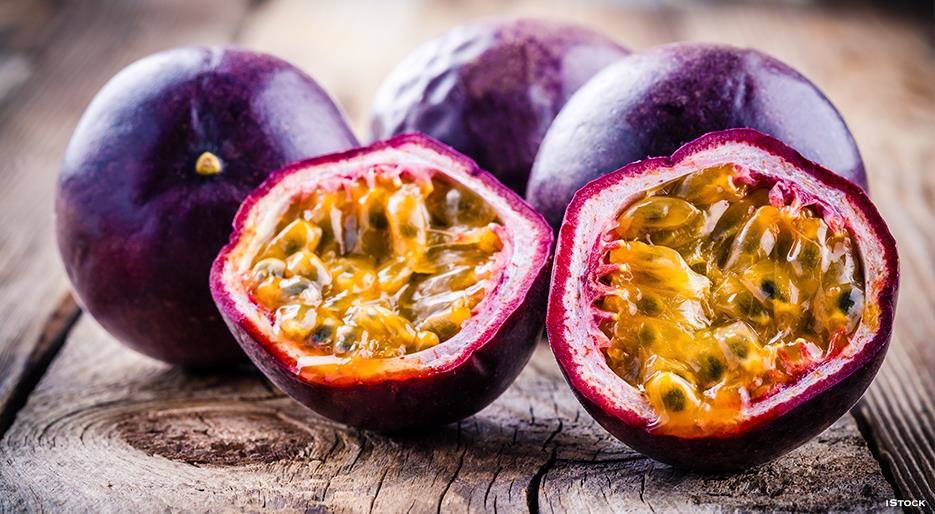How to Grow Passion Fruit
Passion fruit, with its exotic flavor and vibrant appearance, is a delightful addition to any garden. Whether you’re a seasoned gardener or a novice enthusiast, learning how to grow passion fruit can be a rewarding experience. In this comprehensive guide, we’ll explore everything you need to know about cultivating this tropical delicacy in your own backyard.

Understanding Passion Fruit
Passion fruit (Passiflora edulis) belongs to the Passifloraceae family and is native to South America. It thrives in subtropical and tropical regions, but with proper care, it can also be grown in more temperate climates.
Selecting the Right Variety
How to grow passion fruit, The first step in growing passion fruit is selecting the right variety for your climate and preferences. Two main types are purple passion fruit (Passiflora edulis) and yellow passion fruit (Passiflora edulis f. flavicarpa). Consider factors such as temperature tolerance, fruit size, and flavor profile when making your selection.
Finding the Perfect Location
Passion fruit vines require a sunny location with well-drained soil. Choose a spot that receives at least 6 to 8 hours of sunlight daily. Additionally, ensure adequate support for the vines to climb, such as trellises, fences, or arbors.
Soil Preparation and Planting
Prepare the soil by incorporating organic matter, such as compost or aged manure, to improve fertility and drainage. Passion fruit prefers slightly acidic to neutral soil with a pH range of 6.5 to 7.5. Plant your passion fruit vines during the warm season, spacing them 10 to 15 feet apart to allow for adequate growth.
![]()
Watering and Fertilizing
Established passion fruit vines have moderate water requirements but benefit from consistent moisture, especially during flowering and fruiting periods. Water deeply once or twice a week, depending on weather conditions. Apply a balanced fertilizer every 4 to 6 weeks during the growing season to promote healthy growth and fruit development.
Training and Pruning
As passion fruit vines grow, train them to climb their support structure using ties or gentle guiding. Prune the vines regularly to remove dead or diseased growth and encourage branching. This helps maintain a manageable size and promotes airflow, reducing the risk of fungal diseases.
Pollination and Fruit Set
Pest and Disease Management
Keep an eye out for common pests such as aphids, spider mites, and fruit flies, which may infest passion fruit vines. Monitor for signs of disease, including fungal infections like Fusarium wilt and bacterial spot. Practice good garden hygiene, such as removing fallen leaves and fruits, to minimize pest and disease pressure.
Harvesting and Enjoying Your Passion Fruit
Passion fruits typically ripen 70 to 80 days after flowering, depending on the variety and growing conditions. Harvest fruits when they reach full color and slightly wrinkled skin. Store them at room temperature until fully ripe, then refrigerate for extended shelf life. Enjoy the sweet-tart flavor of fresh passion fruit in juices, desserts, or as a topping for yogurt and ice cream.

Conclusion
Now that you know how to grow passion fruit, it’s time to put your knowledge into practice and embark on your passion fruit-growing journey. By following the steps outlined in this guide and adapting them to your specific growing conditions, you can successfully cultivate thriving passion fruit vines in your garden. Embrace the exotic allure of passion fruit and savor the fruits of your labor in every sweet and tangy bite. Happy gardening!

